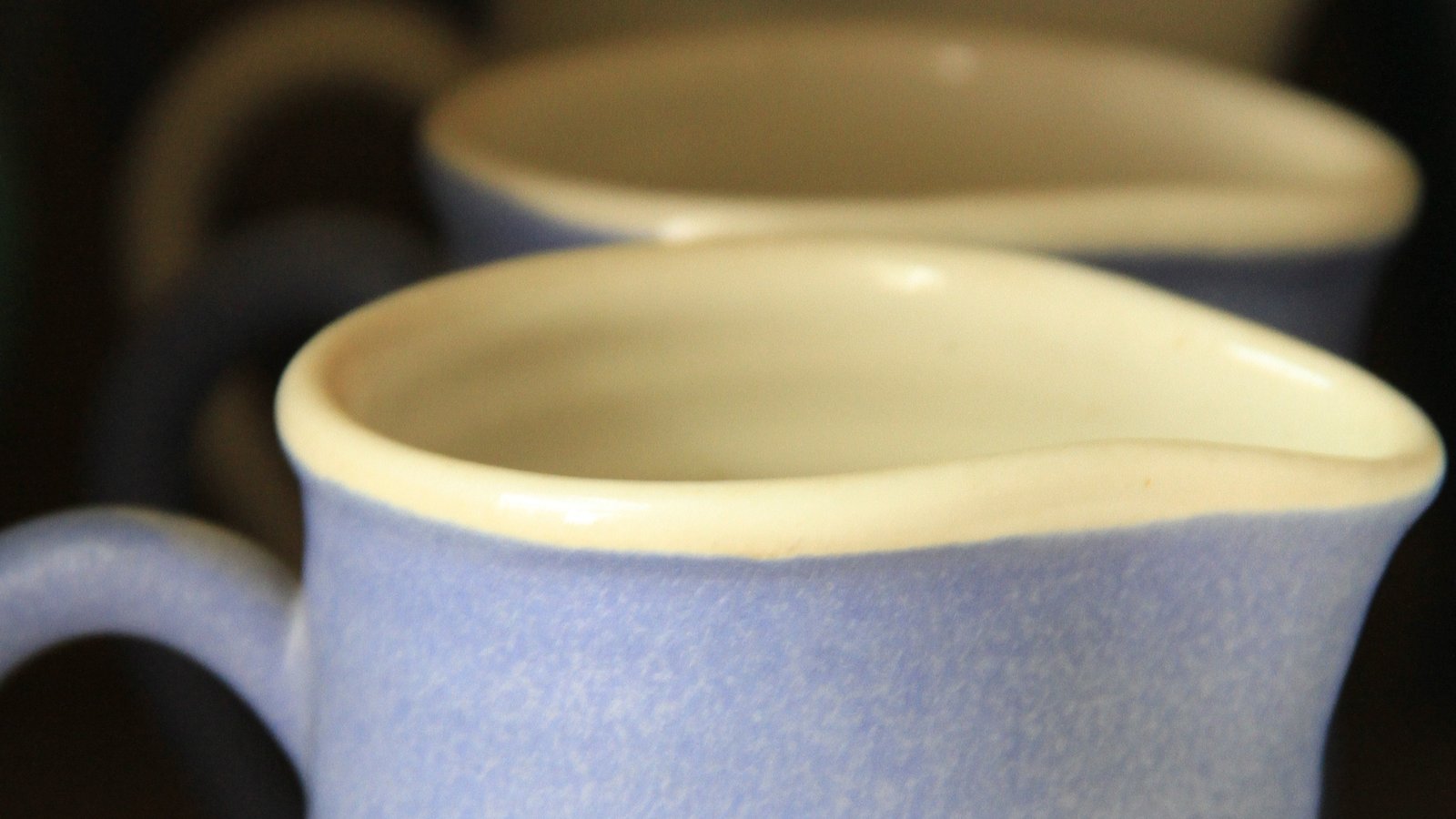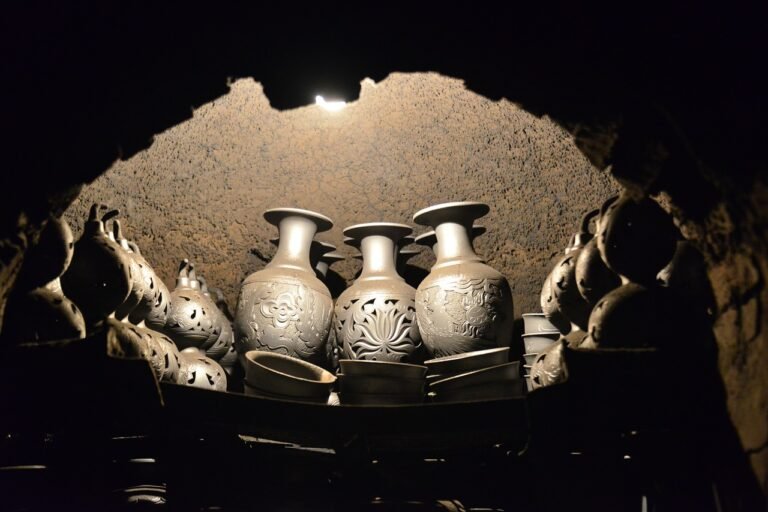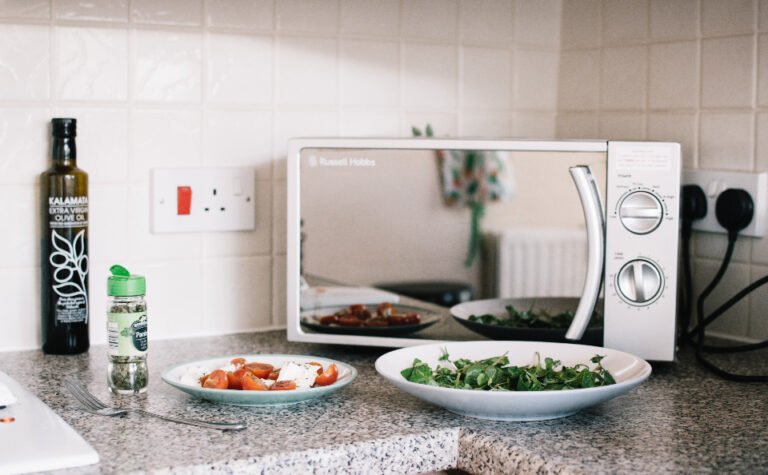How Can I Remove The Glaze From Pottery? Quick Facts!
There are times when you may feel like the glaze you applied is not matching. Or the glazing might not look right. The type, design, and thickness of glazing can raise questions for you. How Can I Remove The Glaze From Pottery?
Sanding the surface is one of the most popular methods for removing glaze. Methods vary depending on the stage of the pottery. Pre-firing and post-firing are the two basic method categories.
Why Do Pre-Firing Methods Differ From Post-Firing?
Pre-firing methods remove glazes from the bisque (biscuit) stage before glaze firing. It is possible to fix any mistakes before the glaze hardens at this stage. With post-firing, the glazing has already become permanent. It makes it a bit difficult to remove the glazing.
How Can I Remove Glaze From Pottery Before Firing?
One of the most common pre-firing methods is sanding to remove excess clay. The glazed surface needs to be dry for even results. Sanding is a suitable method for removing glaze from a small area.
Ensure a smooth rubbing of sandpaper to avoid removing too much clay. With coarse grit sandpaper, you can work your way up to fine grit. Wear a dust mask (respirator) while using sandpaper to avoid inhaling the dust.
What Are The Other Pre-Firing Methods I Can Use To Remove The Glaze?
There are several simple ways for you to meet the need. You can wash or sponge the glaze off bisque ware before firing. Be patient to preserve the design and finish of your pottery when removing the glazing.
How Can I Wipe Off The Glaze?
Rub the glaze off the pottery with a damp sponge to remove tiny patches of glazing. Be sure not to over wet the sponge when you dip it in warm water. Water that is too much may cause the glaze to smudge. Remove the unwanted glazing with gentle yet constant rubbing.
Wash the glazing off the bisque if you need to remove the glazing from your entire piece. Soften the glaze by soaking the bisque in water.
Allow the water to penetrate the glazing for a while. Rub the glazing off with a damp sponge. Rinse the sponge often and keep rubbing until all the glaze disappears. Allow the pottery to dry out before reglazing.
Scrape off glaze globules with a sharp object when you have them on top of the glazing. A dental tool makes this task a lot easier. Scraping is also an effective way to remove small amounts of glazing from your pottery.
Be careful not to apply too much pressure on the tool to avoid digging into the glaze.
How Can I Remove The Glaze From Pottery After Firing; Is It Possible To Sand Glazed Pottery?
Sandpaper is the most common technique for removing glaze after firing. The method works well for removing the glazing from small areas, such as sharp edges.
Both wet and dry sanding is suitable here. Rub the coarse sandpaper in a circular motion applying more pressure. Rub until the glaze disappears. To smooth out the surface, switch to fine sandpaper.
Glaze often melts to the bottom of your pot if it is too thick. With a handheld rotary tool, you can grind off the melted glazing. Diamond bits work well for this purpose.
It is also possible to sand down sharp edges using a rotary tool. Be sure to wear safety glasses (goggles) while using this post-firing method.
Bench grinders make it easy to deal with sharp edges on the glaze. Stay safe by using both tabletop and bench grinders outdoors. Make sure you wear safety glasses and dust masks whenever you use these tools.
Use a bat grinder to remove the glaze from pottery bottoms. Use the bat grinder on your pottery wheel to grind away the glazing from your piece. Set the pottery wheel to a slower speed than its medium speed. While you are removing the glaze, keep the bat grinder wet.
When using these tools, be careful not to apply too much pressure to your pottery. Excessive force can damage your pottery. Learn how to grind off the glaze on your pottery in this video.
How Do I Remove The Glaze From Terracotta Pots?
Clean your terracotta pot with water and a sponge. Sand the surface with coarse sandpaper to remove any loose glaze. Apply water when sanding the surface.
Rinse and allow the pot to air dry before reglazing. Avoid using harsh chemicals or rough materials that can damage the pottery.
What Is The Purpose Of Cleaning Bisqueware Before Glazing?
The bisque that has been on a shelf for quite some time is dusty. There is often a fine layer of ceramic dust left behind from the bisque fire. Dust and ceramic debris can contaminate your glaze finish. These particles can cause pinholes in the glaze.
Dust can cause glaze crawling. It can leave unglazed patches in fired ceramics. Clean your bisque to get a better glaze finish.
How Can I Clean My Bisque Before Glazing?
Wet or dampen a sponge and wipe your bisque. Run it under a faucet and rub it with your fingers or a cloth. You can also dip it in a bucket of water.
Is It Okay To Wash The Glaze Off The Bisque?
As bisque pottery is porous and dry, it can absorb water. Due to this ability, glaze adheres well to bisque ware. Glaze particles stick to the bisque surface when the dry bisque absorbs liquid from the glazing.
Bisque pottery soaks up a lot of water when you wash off the glaze for reglazing. It makes the pottery less absorbent. Fewer glaze particles adhere to bisque pottery as a result. It may result in patches of uneven glaze coating.
After washing off the glaze, let the bisque pottery dry for at least one day. The drying time depends on the room temperature and humidity level.
Conclusion:
Wear safety glasses, dust masks, and long sleeves while using grinders or sanders. The appropriate methods make removing glaze from pottery easier.







